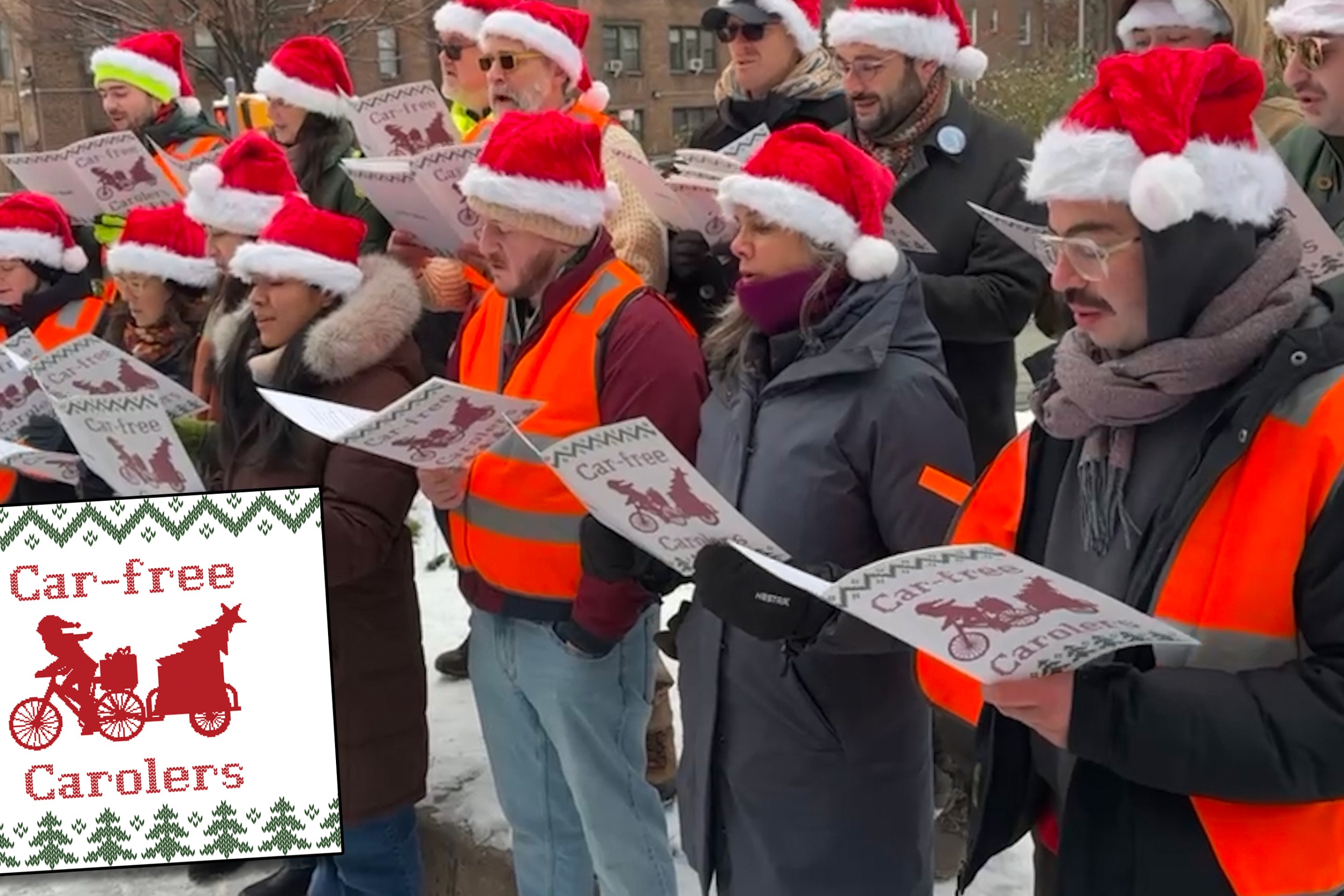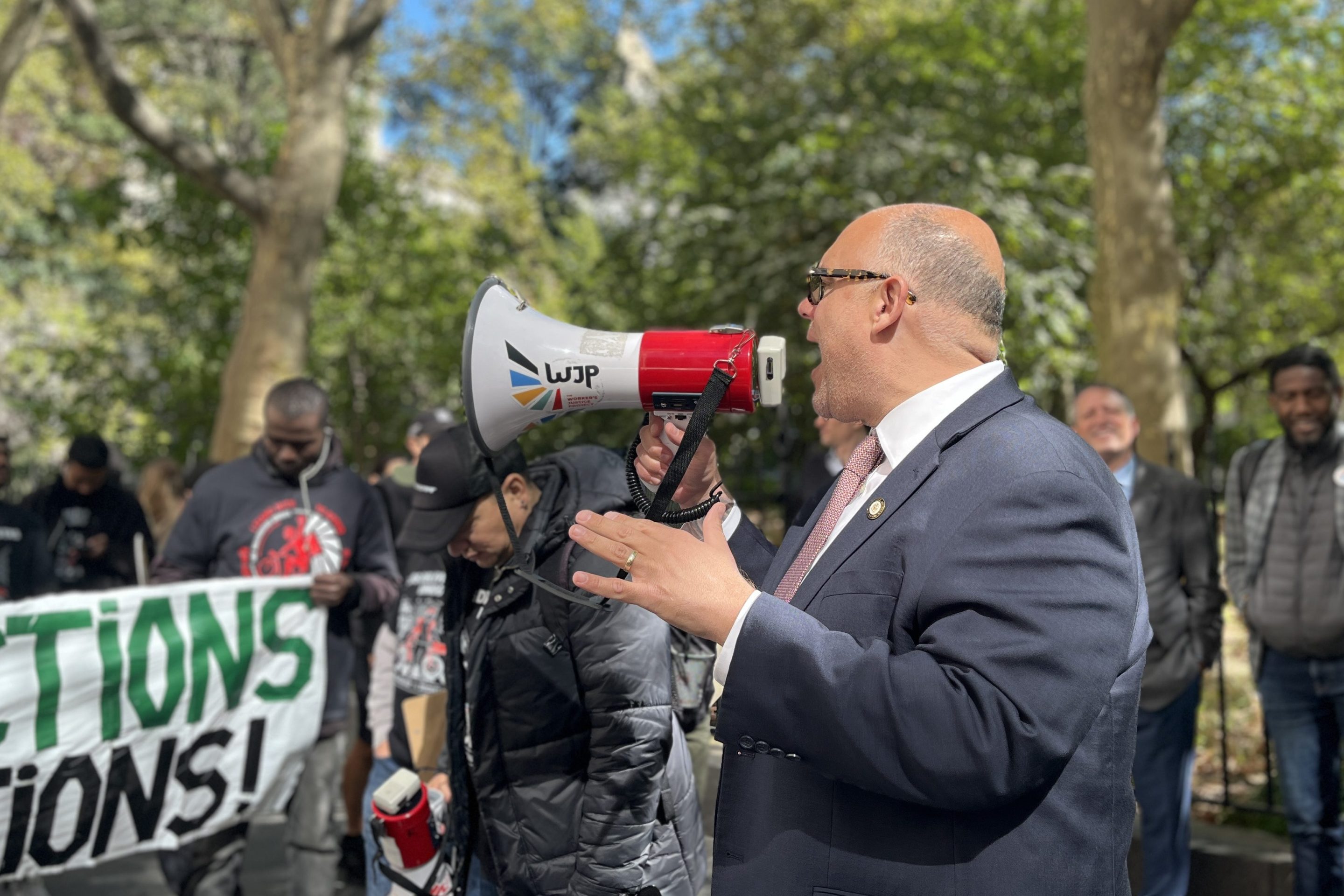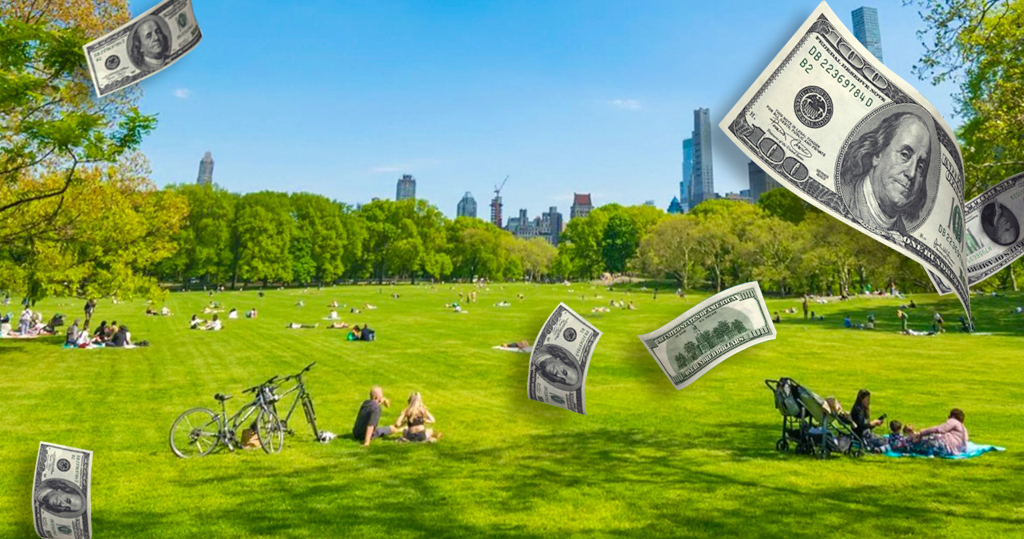More than 9,000 trucks come and go from last-mile warehouses in Sunset Park and Red Hook every day — the highest number of pollutant-spewing big rigs to roll through any neighborhood in the five boroughs and 90 times the number on the Upper East Side, according to a new report.
Advocates and local pols have long been trying to rein in the proliferation of distribution facilities like Amazon, FedEx, and UPS in low-income communities of color, contributing to poor air quality, deleterious health effects, and dangerous roads, all of which are already exacerbated by overwhelming traffic from the Brooklyn-Queens Expressway slicing through several communities along its corridor.
"New York communities have been raising the alarm about trucks in neighborhoods for years. New science and analysis reinforces the disproportionate risk imposed by trucks serving warehouses. New York as a climate leader can lead the way in ensuring the cleanest goods transport starts in the most vulnerable communities.” said Aileen Nowlan, a policy director at the Environmental Defense Fund and lead author of the report.
The analysis, which looks at the growth of last-mile warehouses in response to the e-commerce boom, shows that a quarter of residents across the Empire State live within half a mile of a distribution center that’s at least 50,000 square feet, disproportionately harming Black and Latino communities — crucial figures as Albany considers legislation, called the Clean Deliveries Act, which seeks to crack down on last-mile facilities statewide by requiring officials to review emissions, minimize pollution when possible, and study the possibility of implementing low-or-zero-emission areas in congestion hotspots.
“These warehouses are causing further air pollution in communities of color that have historically been disproportionately impacted by polluting transportation infrastructure,” said Kevin Garcia, Transportation Planner with the New York City Environmental Justice Alliance. “The Clean Deliveries Act recognizes this disparity and is key legislation to protect frontline communities from increased vehicular traffic and tailpipe emissions.”
The number of deliveries New Yorkers placed with online retailers like Amazon skyrocketed during the pandemic — almost one-quarter of households place an order four times a week, and nearly 80 percent place an order online at least once a week, according to city stats. But the burden does not fall equally.
In state Sen. Andrew Gounardes’s district, which includes Sunset Park and Red Hook, a whopping 9,200 trucks come and go from the neighborhoods’ more than 13 million square feet of warehouses, according to the report — where large trucks drop off goods for sorting and loading onto other trucks or cars for distribution.
"Frankly, I'm not surprised my district has the most trucks in the city. Anyone who lives or spends time along the waterfront in Red Hook and Sunset Park knows about these trucks. They know about the pollution and they know how dangerous streets have become," said Gounardes. "And we know this surge in last-mile warehouses and online deliveries is only going to continue to grow. We need to take action, for the sake of our climate and the safety of our streets."
Gounardes’s Southern Brooklyn district overlaps with that of Assembly Member Marcela Mitaynes, who also represents the largest number of daily trucks serving distribution centers in the city. She is calling on her colleagues up in Albany to pass the so-called Clean Deliveries Act.
"[This report] highlights the obvious truth that many of our redlined working-class communities of color have experienced over the last several years: the proliferation of increasingly large last-mile warehouse facilities has worsened the effects of pollution, health risks, and safety in their communities as our city and state stall behind enacting necessary health and environmental regulations for them,” said Mitaynes, who is carrying the bill in the lower chamber.
Meanwhile, tony Brooklyn Heights and Cobble Hill, just 1,600 trucks come and go daily from warehouses, according to the report. And on Manhattan’s Upper East Side, it's only 100 trucks, the report said.






